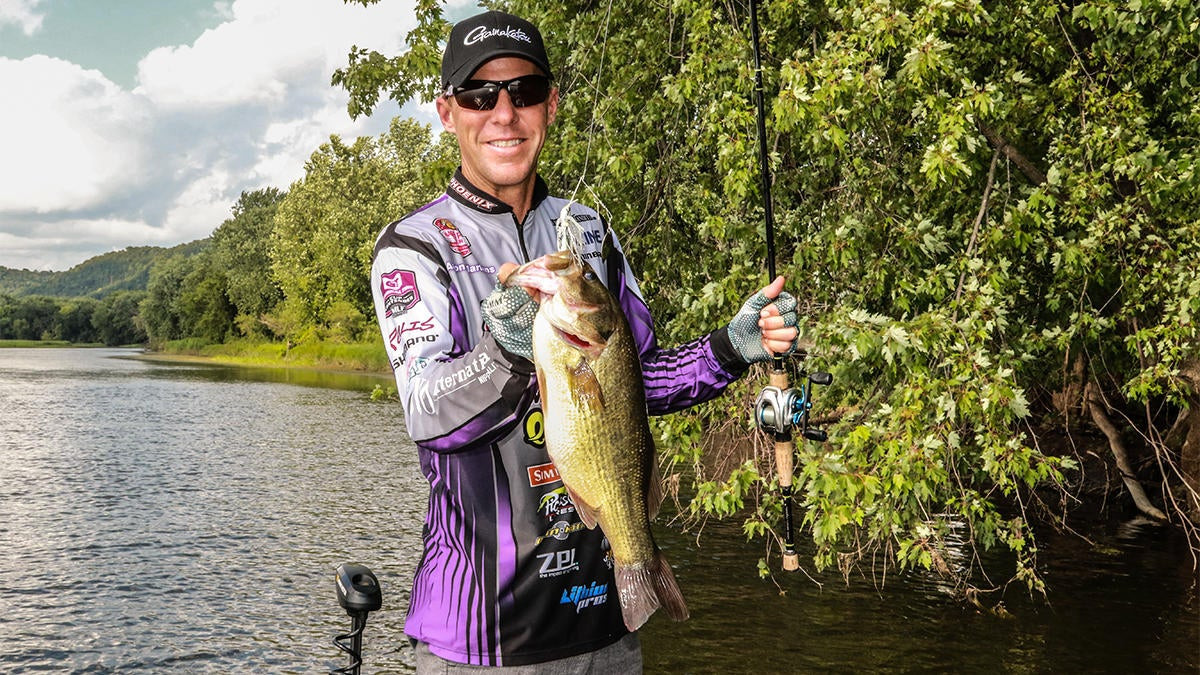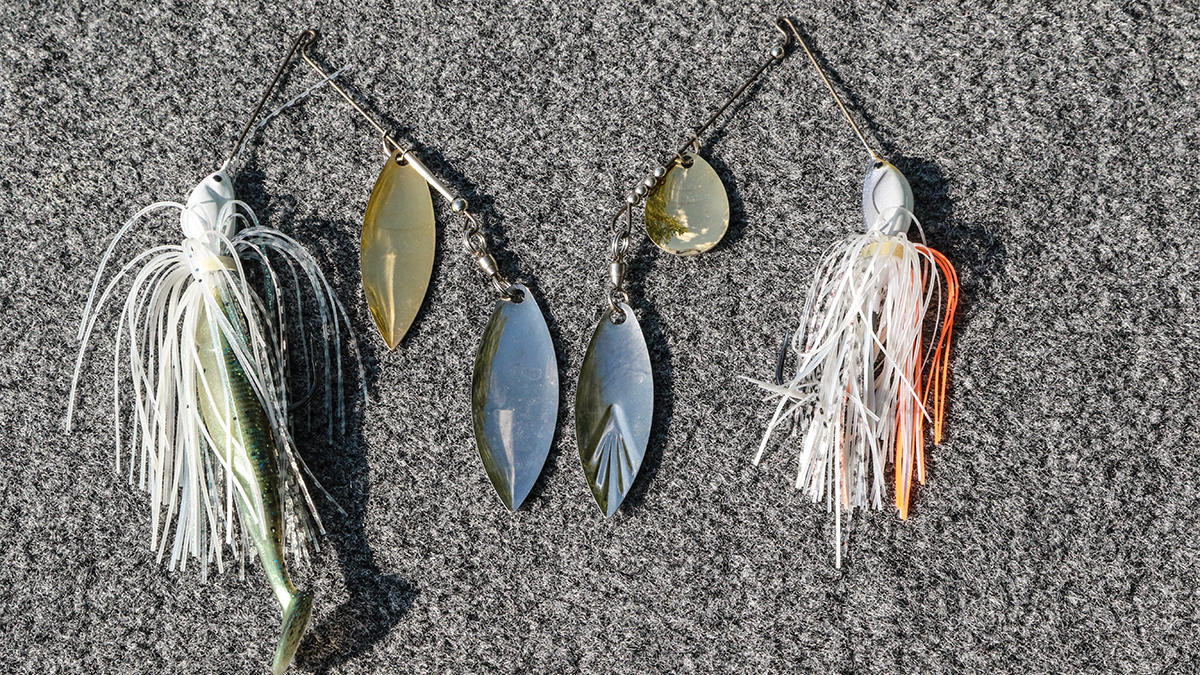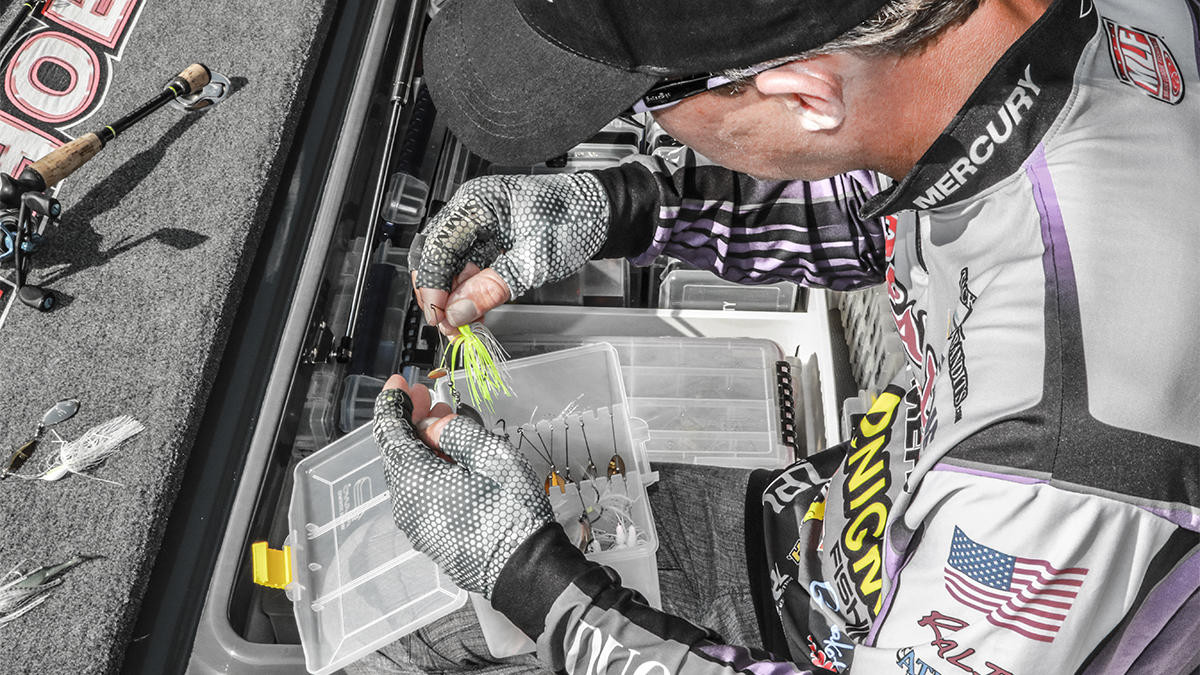Some may tell you the bladed jig craze has lessoned the spinnerbait’s relevance, but don’t let Aaron Martens hear you say that. The Alabama pro enjoys a well-earned reputation as a Jedi master of finesse tactics, but he’s also keen to blade his way through a wide variety of reaction-focused scenarios.
“The spinnerbait is a technique that has been around forever; it’s something a lot of guys overlook,” Martens said. “People gets sidetracked by the new (bait) innovations, but some of the old stuff still works just as good.
“There are 1,000 different blade combinations — probably more. A spinnerbait has flash that fish are attracted to and the vibration is something you can dial in based on what the fish are feeding on.”
To say Martens knows spinnerbaits would be tantamount to calling Michelangelo a painter. Suffice it to say, his sea of knowledge would quickly leave most minds treading water.
If I tried to explain the staggering array of spinnerbait diversity Martens carries, we’d be here ’til Christmas. All have their place — often in micro-specific, sub-sub-sub-level particulars; but he shared a handful of insights into his game that’ll steer us in the right direction for personalized efforts.
Blade choice
Water color and temperature are Martens’ key metrics for blade choice. For the late-summer to early fall period, he uses a lot of smaller double willow-leaf setups to match the seasonally smaller baitfish.
The smaller willows also facilitate the faster retrieves Martens wants in the warmer water. If the water has some color to it, he’ll go with a Colorado/willow-leaf model.
“I’ll usually start with a small Colorado blade, but I’ll change the size based on how deep I’m fishing and what kind of drag I want (to affect bait speed),” Martens said. “As the water gets colder, that’s when I’ll go to a double-Colorado, or Indiana-Colorado.”
Martens encourages experimenting will blade sizes/style variations – as evidenced by his multiple spinnerbait boxes testing their capacities – but he stresses the importance of doing so with intention.
Teamwork makes the dream work: A general rule of thumb states that a larger Colorado blade tends to help in stained water or dim conditions, as increasing the “thump” gives the fish more vibration to track. Martens nods in agreement here, but points out how spinnerbait blades interact.
For this, picture cyclists drafting one another to manage air resistance.
“The size of a Colorado blade (in the top position) will do things to the willow-leaf; it will take water from it, add water to it,” Martens explained. “The bigger you go in the front, the less water the willow-leaf gets in the back.”
Such tweaks not only impact the amount of flash a willow-leaf emits, but also the balance of retrieve speed and running depth.
“If the fish want it really fast, then I’ll use a small Colorado blade on the front and a medium willow-leaf,” Martens said. “But if I want to slow it down, a lot of times, I’ll keep the same willow-leaf but I’ll go up a size or two in the Colorado in the front. That will slow the bait down at the same depth, so I can fish it slower and put out a little more vibration.”
Finishing touches: Martens’ preferences for blade shape also runs pretty deep, but he points to a key attribute for willow-leaf blades.
“A flat willow-leaf blade is wider than a cupped willow-leaf (of the same size), so it has a lot of drag, but not necessarily a lot of vibration,” Martens said. “Sometimes you want that drag (from a Willow-leaf) when you’re catching fish that are actually seeing the bait. You may want to keep the bait up shallower, or keep it up higher in the water column and that’s easier with a flat blade.”
Martens notes that he can also accomplish this depth strategy with cupped willow-leaves by using two larger blades. The decision, here, becomes a matter of overall bait size; what kind of profile does he want to present.
Tangible tips
We’ve barely scratched the surface of Aaron Martens’ spinnerbait prowess, but he leaves us with a couple of tips for optimizing this technique.
- Keep the shape: Check your bait after each hook-up and tune accordingly. Bite impact and shake force can distort a spinnerbait’s alignment and skew its track. Take a few seconds to ensure effective presentations.
- Knot good: “Make sure your knot hasn’t gotten wrapped around the R-bend or it hasn’t gotten frayed or damaged during a fight,” Martens said. “When you have fluorocarbon tied around steel wire, it can fail on you really easy. I pay special attention to a spinnerbait knot, just because of the force that is put on it.”














